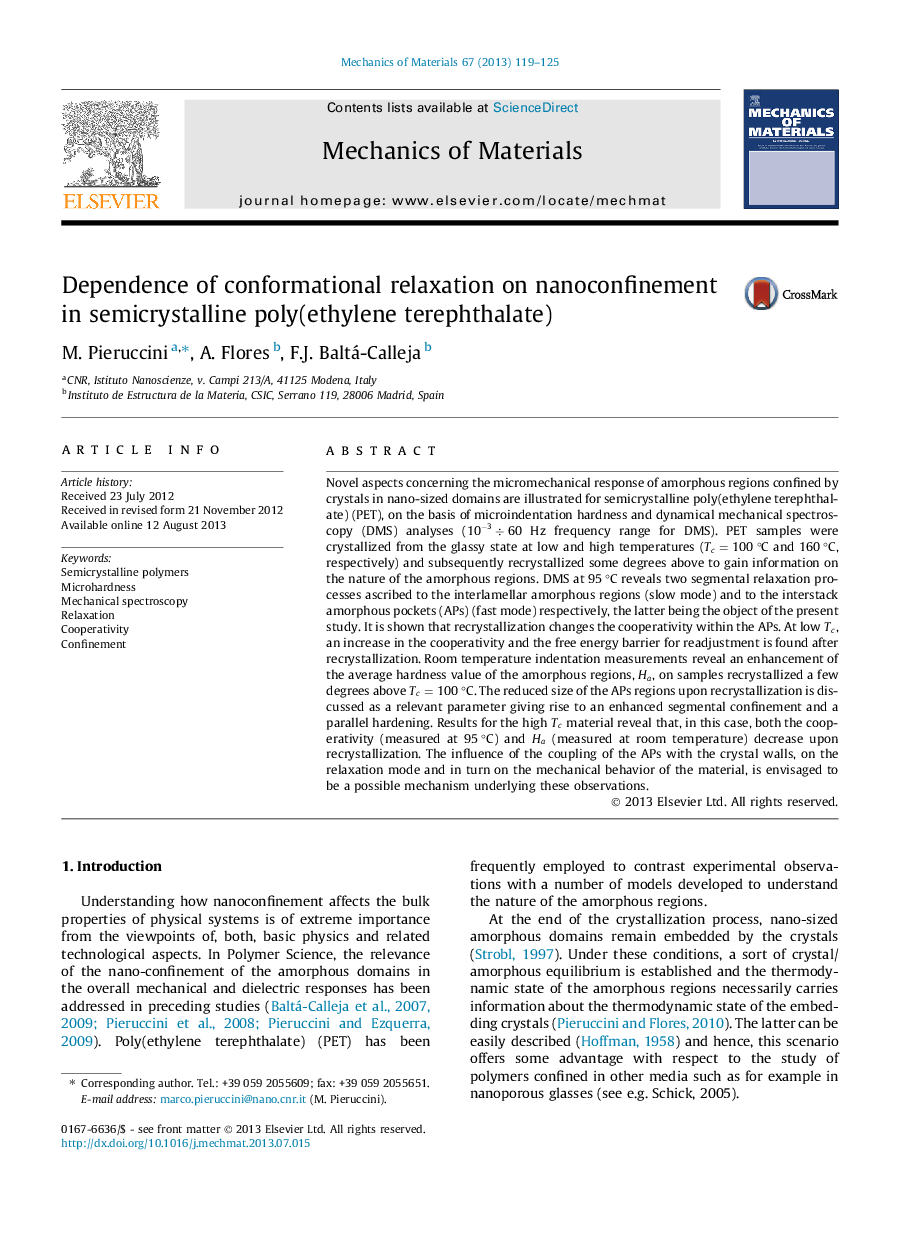| Article ID | Journal | Published Year | Pages | File Type |
|---|---|---|---|---|
| 800389 | Mechanics of Materials | 2013 | 7 Pages |
Novel aspects concerning the micromechanical response of amorphous regions confined by crystals in nano-sized domains are illustrated for semicrystalline poly(ethylene terephthalate) (PET), on the basis of microindentation hardness and dynamical mechanical spectroscopy (DMS) analyses (10-3÷6010-3÷60 Hz frequency range for DMS). PET samples were crystallized from the glassy state at low and high temperatures (Tc=100Tc=100 °C and 160 °C, respectively) and subsequently recrystallized some degrees above to gain information on the nature of the amorphous regions. DMS at 95 °C reveals two segmental relaxation processes ascribed to the interlamellar amorphous regions (slow mode) and to the interstack amorphous pockets (APs) (fast mode) respectively, the latter being the object of the present study. It is shown that recrystallization changes the cooperativity within the APs. At low TcTc, an increase in the cooperativity and the free energy barrier for readjustment is found after recrystallization. Room temperature indentation measurements reveal an enhancement of the average hardness value of the amorphous regions, HaHa, on samples recrystallized a few degrees above Tc=100Tc=100 °C. The reduced size of the APs regions upon recrystallization is discussed as a relevant parameter giving rise to an enhanced segmental confinement and a parallel hardening. Results for the high TcTc material reveal that, in this case, both the cooperativity (measured at 95 °C) and HaHa (measured at room temperature) decrease upon recrystallization. The influence of the coupling of the APs with the crystal walls, on the relaxation mode and in turn on the mechanical behavior of the material, is envisaged to be a possible mechanism underlying these observations.
